The town of Alet-les-Bains is located in the Aude département just off the D118 south of Limoux. In the heart of the ancient walled town are the ruins of Ecclesiastical buidings - the remains of an abbey and cathedral church.
The Abbey and Cathedral

![]() In
813, Alet was the seat of a Benedictine abbey founded by Béra, Viscount
of Razés. It was dedicated to Mary (who is also referred to as Notre Dame
- Our Lady). The abbey was called the Abbaye Sainte-Marie d'Alet - the Abbey of
Saint Mary of Alet, but it is more commonly known today as the Abbey of Alet les
Bains. It is situated in the centre of town, by the River
Aude.
In
813, Alet was the seat of a Benedictine abbey founded by Béra, Viscount
of Razés. It was dedicated to Mary (who is also referred to as Notre Dame
- Our Lady). The abbey was called the Abbaye Sainte-Marie d'Alet - the Abbey of
Saint Mary of Alet, but it is more commonly known today as the Abbey of Alet les
Bains. It is situated in the centre of town, by the River
Aude.
In the 12th century, it was an influential site, attracting pilgrims. A nearby Abbey at Saint-Papoul had been founded in Carolingian times. At the begining of the eleventh century it adopted the rule of St. Benedict and in 1119 became dependent on the Abbey of Alet.
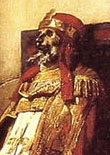
![]() Between
1167 and 1197 the incumbent Abbott, Pons Amiel, fortified
the town. At his death in 1197 the Viscount of the Razés,
Raymond-Roger
Trencavel, was only nine years old. It therefore fell
to his guardian, Bertrand
de Saissac, to appoint a new Abbott according to custom.
The monks meanwhile appointed their own candidate, Bernard
de St-Ferréol, as the new Abbot. Bertrand de Saissac
was not pleased by the monks' choice. He expelled Bernard
and installed his own candidate as Abbot. The new Abbot,
one Boson, once installed had the body of Pons Amiel exhumed,
dressed in his best clerical garb, tried under ecclesiastical
law and condemned. Bizarre as this sounds to us today, such
trials seem to have been not uncommon in the Middle Ages
(In Rome in January 897, the body of Pope Formosus, who
had been dead for nine months, had been exhumed, dressed
in full canonical vestments and seated on the papal throne.
His successor, Pope Stephen VI, then read out charges against
him, conducted a form of trial, and condemned Pope Formosus
to posthumous mutilation - an event known to historians
as the Cadaver Synod).
Between
1167 and 1197 the incumbent Abbott, Pons Amiel, fortified
the town. At his death in 1197 the Viscount of the Razés,
Raymond-Roger
Trencavel, was only nine years old. It therefore fell
to his guardian, Bertrand
de Saissac, to appoint a new Abbott according to custom.
The monks meanwhile appointed their own candidate, Bernard
de St-Ferréol, as the new Abbot. Bertrand de Saissac
was not pleased by the monks' choice. He expelled Bernard
and installed his own candidate as Abbot. The new Abbot,
one Boson, once installed had the body of Pons Amiel exhumed,
dressed in his best clerical garb, tried under ecclesiastical
law and condemned. Bizarre as this sounds to us today, such
trials seem to have been not uncommon in the Middle Ages
(In Rome in January 897, the body of Pope Formosus, who
had been dead for nine months, had been exhumed, dressed
in full canonical vestments and seated on the papal throne.
His successor, Pope Stephen VI, then read out charges against
him, conducted a form of trial, and condemned Pope Formosus
to posthumous mutilation - an event known to historians
as the Cadaver Synod).

![]() The
Abbey was made into an Episcopal see by Pope John XXII (a
local boy called Jacques Duèze or d'Euse, born in
Cahors and trained in Montpellier)
who liked to create new sees in the area. The new diocese,
created on 11 July 1317 by reducing the existing diocese
of Carcassonne,
included 60 parishes from Formigueres to Saint-Paul de Fenouillet.
One reason for founding of it may have been the existence
in the thirteenth century of a Cathar
Bishop of the Razés - A Catholic bishop supported
by the Inquisition
was just what was needed to wipe out any remaining vestiges
of Cathar belief - what the Catholic Church regarded as
the Cathar
heresy.
The
Abbey was made into an Episcopal see by Pope John XXII (a
local boy called Jacques Duèze or d'Euse, born in
Cahors and trained in Montpellier)
who liked to create new sees in the area. The new diocese,
created on 11 July 1317 by reducing the existing diocese
of Carcassonne,
included 60 parishes from Formigueres to Saint-Paul de Fenouillet.
One reason for founding of it may have been the existence
in the thirteenth century of a Cathar
Bishop of the Razés - A Catholic bishop supported
by the Inquisition
was just what was needed to wipe out any remaining vestiges
of Cathar belief - what the Catholic Church regarded as
the Cathar
heresy.
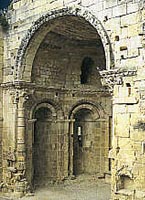
![]() The
new cathedral church was built next to the Abbey, By 1318 just two years after
the election of John XXII, the Romanesque church had a great Gothic choir. A bishop's
palace was built near to the site of the old abbey.
The
new cathedral church was built next to the Abbey, By 1318 just two years after
the election of John XXII, the Romanesque church had a great Gothic choir. A bishop's
palace was built near to the site of the old abbey.
(According some of the less well informed tourist information websites the abbey was destroyed during the Cathar Crusade - but this is not true. The error may be the result of confabulating this religious war against the Cathars with much later Wars of Religion. According to other even more suspect devotional sources the abbey had been damaged by the Count of Carcassonne in the 11th century, but happily survived. The abbey's survival is attributed as a matter of certain fact to its possession of relics of "the True Cross". Why the Viscount of Carcassonne , who was also the Viscount of the Razés, should attack his own territory is not explained - and neither is the failure of the relics to work their protective wonders after the eleventh century).
In 1577 Alet cathedral was largely destroyed by Huguenot Christians during the Wars of Religion.
The most famous bishop of Alet was Nicolas Pavillon, a Jansenist, known for his resistance to papal pretensions. He was Bishop of Alet from 1637 to 1677. He chose not to restore the damaged cathedral. Instead he built the present bridge over the Aude in 1662, and also created a sophisticated irrigation system and a seminary.

 The
cathedral choir was sold by the last bishop of Alet, Charles
de la Cropte de Chanterac, in 1776, a few years before he
was deposed during the French Revolution. The choir was
then demolished to allow the road to be widened (this road,
Alet-les-Bains' main street, is now named after Nicolas
Pavillon.) The Cathedral itself continued as a Cathedral
church until it's dissolution on 29 November 1801 when the
Diocese of Alet was absorbed back into the Diocese of Carcassonne
The
cathedral choir was sold by the last bishop of Alet, Charles
de la Cropte de Chanterac, in 1776, a few years before he
was deposed during the French Revolution. The choir was
then demolished to allow the road to be widened (this road,
Alet-les-Bains' main street, is now named after Nicolas
Pavillon.) The Cathedral itself continued as a Cathedral
church until it's dissolution on 29 November 1801 when the
Diocese of Alet was absorbed back into the Diocese of Carcassonne
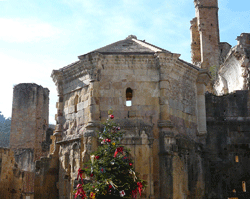
![]() Of
the original abbey, the remains of two towers can still
be seen: Notre-Dame Tower to the south and St. Michael's
Tower to the north. The small chancel is well-preserved.
Pillar capitals are decorated with geometric patterns and
vegetation. To the north of the church is the Romanesque
chapter house, with interesting motifs on its capitals.
Of the ancient (eleventh century) abbey church it is still
possible to make out six bays of the nave, five bays of
the apse, and one of the two transepts. The abbey has been
described as the most beautiful ruin in France.
Of
the original abbey, the remains of two towers can still
be seen: Notre-Dame Tower to the south and St. Michael's
Tower to the north. The small chancel is well-preserved.
Pillar capitals are decorated with geometric patterns and
vegetation. To the north of the church is the Romanesque
chapter house, with interesting motifs on its capitals.
Of the ancient (eleventh century) abbey church it is still
possible to make out six bays of the nave, five bays of
the apse, and one of the two transepts. The abbey has been
described as the most beautiful ruin in France.
Abbaye Notre-Dame, Avenue Nicolas Pavillon, F-11580 Alet-Les-Bains, Tel:+33-(0)46869-9356 (Closed: 20th December to 10th January)
Related things to see:
Click here for more on the medieval
walled town of Alet-les-Bains ![]()
Click here for more on the natural
springs at Alet-les-Bains ![]()
Click here for more on the The Evêché, the
old bishop's palace at Alet-les-Bains ![]()
Click here for more on the Abbey
at Saint-Papoul ![]()
Click
here for more abbeys
in the Laguedoc-Roussillon ![]()
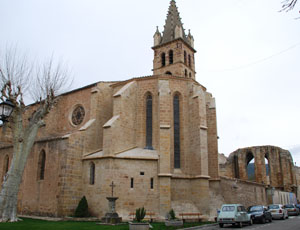 |
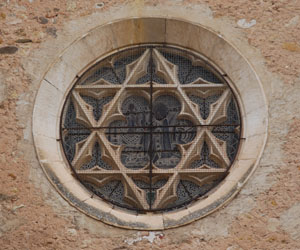 |
 |
 |
 |
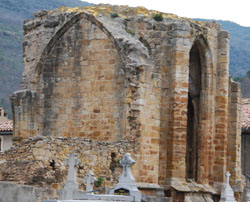 |
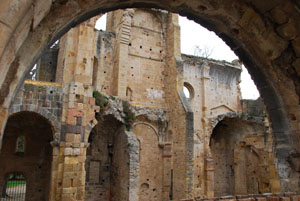 |
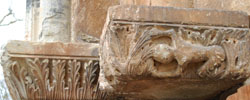 |
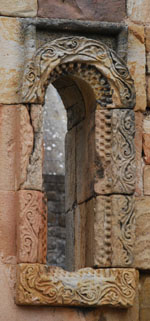 |
 |
 |
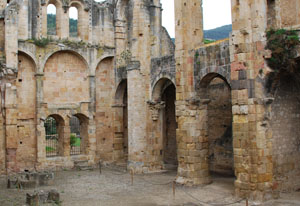 |
 |
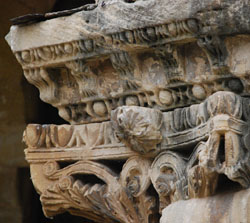 |
 |
 |
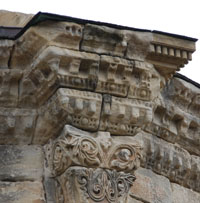 |
 |
 |
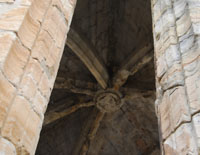 |
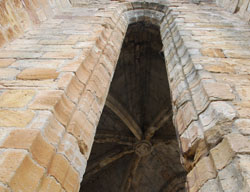 |
 |
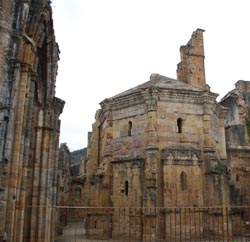 |
 |
 |
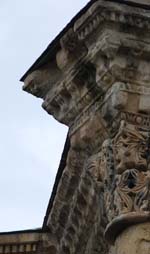 |
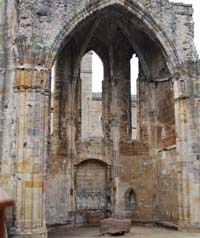 |
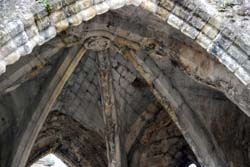 |






